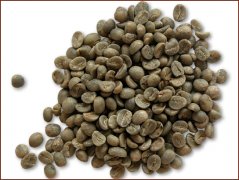Honduras, the world's boutique coffee bean producing region.
Honduras
Honduras
The tropical rainforest countries of Central America, mixed with the mysterious flavor of ancient Mayan, are passionate and unrestrained in Central America, so they are suitable for making single, medium or deep baking. Coffee beans with a slightly charming fragrance of flowers and fruits, very delicate and elegant, taste mild and full, slightly sour, aftertaste back sweet, belong to the gentle style of coffee. The appearance is small, the color is round, and it is light blue-green. Honduras coffee bean production is the second largest exporter in Central America, with a large quantity but high quality, which is the best entry choice for drinking coffee.
Alcohol thickness: ☆☆☆
Acidity: ☆☆☆☆
Degree of balance: ☆☆☆☆
Important Notice :
前街咖啡 FrontStreet Coffee has moved to new addredd:
FrontStreet Coffee Address: 315,Donghua East Road,GuangZhou
Tel:020 38364473
- Prev

Pictures of fine coffee beans, Yunnan small seed coffee and raw beans
Photo of Yunnan small seed Coffee Raw Bean (Arabica)
- Next

Florence coffee beans, the world's boutique coffee bean producing area.
Flores Florence (Flores) is one of the most beautiful islands in the Indonesian island chain, with steep valleys, swift rivers, dense forests and fertile soil. In this hidden island, a small number of high-quality Arabica coffee beans are produced. Full round beans, sweet aroma of caramel, thick and warm taste
Related
- Beginners will see the "Coffee pull flower" guide!
- What is the difference between ice blog purified milk and ordinary milk coffee?
- Why is the Philippines the largest producer of crops in Liberia?
- For coffee extraction, should the fine powder be retained?
- How does extracted espresso fill pressed powder? How much strength does it take to press the powder?
- How to make jasmine cold extract coffee? Is the jasmine + latte good?
- Will this little toy really make the coffee taste better? How does Lily Drip affect coffee extraction?
- Will the action of slapping the filter cup also affect coffee extraction?
- What's the difference between powder-to-water ratio and powder-to-liquid ratio?
- What is the Ethiopian local species? What does it have to do with Heirloom native species?

